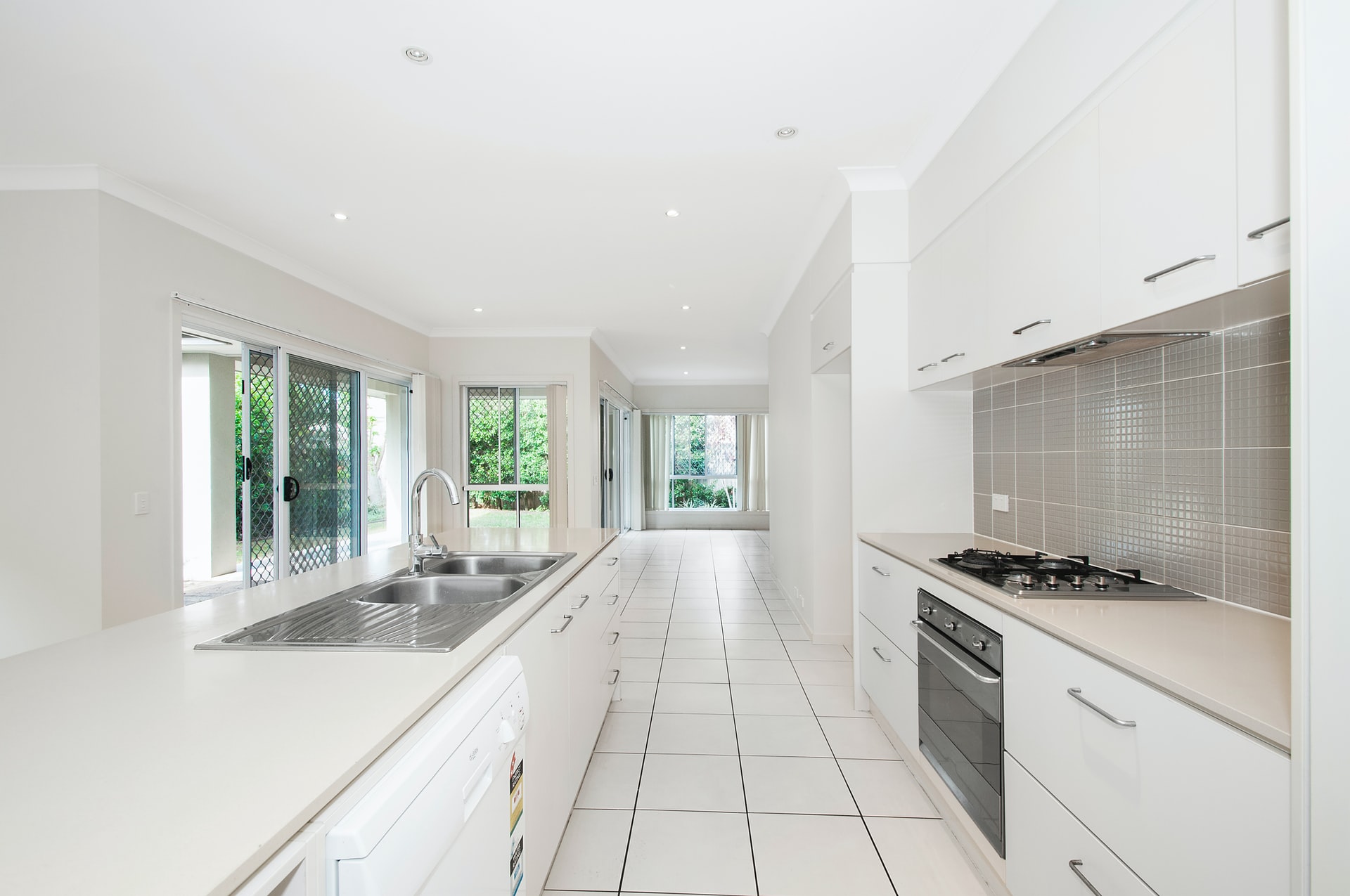Unlike a living room or bedroom remodel, a kitchen renovation is a complicated process. It has more wiring and built-in elements and requires careful consideration for electricity, plumbing, and appliances. All these components must come together to ensure your kitchen functions correctly.
When it comes to flooring, choosing the right floor design is crucial to meet your needs for a lasting effect. Continue reading to determine the right flooring type for your kitchen!
5 Signs to Replace Your Kitchen Floor
Over time, even the highest quality floors will age. Although kitchen flooring is built to last, it can be susceptible to wear and tear due to improper maintenance or consistent heavy traffic. Here are some signs to look out for that suggest you need to revamp your kitchen floor:
1. Buckling or Sagging
If you have tiled or hardwood flooring in your kitchen, watch out for sagging signs. Weak spots between the seams can worsen with time. Buckling results when your floor can no longer bear the heavy traffic that is once used to. Therefore, preserve the structural integrity of your home by replacing your kitchen flooring.
2. Cracks or Chips
Chipping or cracking might not seem serious, but it can ruin your flooring with time. Low-quality tiles and laminate flooring are more likely to chip or crack under heavy traffic. Therefore, replace your kitchen flooring with higher-quality tiles to prevent chips and cracks in the future.
3. Water Damage
Kitchen and bathroom floors are most vulnerable to water damage. A leaky faucet, water splashes, or simple spills can ruin your flooring with moisture damage. Water damage can cause structural issues over time. Therefore, you should consider waterproof flooring when replacing your kitchen floor.
4. Family Changes
Your kitchen should support your life’s various stages. For instance, if your toddler can now move around the house, spilling juice or food off the table, you must install a flooring design that can endure wear and tear and be easily cleaned.
5. Outdated Style
You don’t need to wait for damage to replace your kitchen flooring. Replacing a kitchen floor is a great investment that can boost your overall property value. You can opt for the latest design kitchen floor simply because your current one is outdated.

Types of Flooring Designs to Consider
1. Hardwood Flooring
Hardwood floors are a classic flooring option that goes well with almost any interior design. They boost your property value and are an excellent choice for both commercial and residential kitchens. While this timeless look brings a massive return on investment, you may have to consider some of the drawbacks of hardwood floors. For example, hardwood flooring is, by far, the most expensive flooring design in the flooring industry, with an average floor costing $6 to $12 per square foot. Also, they are not waterproof.
Nevertheless, most people consider installing hardwood flooring due to its durability. With proper maintenance, hardwood floors can last for years! This includes refinishing your floors every ten years or so.
2. SPC Flooring
Stone plastic composite (SPC) is an engineered flooring consisting of ground limestone blended with a vinyl base. These materials make SPC flooring more durable and long-lasting. SPC flooring comes with several benefits. From being waterproof to scratch-resistant, the advantages of SPC planks include:
- Its rigid core structure allows you to install the planks over any uneven subfloor.
- It’s 100% waterproof.
- SPC planks are highly resistant to abrasions and scratches. Thus, an ideal choice for all pet lovers.
- They are easy to maintain and clean.
- It resists stains.
- Relatively cheaper than the flooring materials it substitutes.
- The waterproof technology makes SPC flooring the best choice for bathrooms and kitchens.
3. Tile Flooring

Tile flooring is a great choice if you wish to install a more durable and unique flooring option for your kitchen! Tile flooring replicates the most creative patterns and shapes in the flooring world. They’ll make your kitchen appear warm, trendy, and expensive, helping you create a unique style statement. The many types of tile flooring are:
- Stone-like tile flooring
- Concrete tile flooring
- Traditional white tiles
- Wood-like tiles
4. Luxury Vinyl Planks
LVPs are durable, waterproof, and scratchproof. They are easy to maintain and don’t require adhesives to install. LVPs are relatively cheaper than the materials they mimic.
LVPs are made up of compressed vinyl layers with a high-resolution image that allows them to reflect the look of natural materials such as hardwood, tiles, stone, and more. It consists of several layers, including a vinyl core that makes the planks flexible and durable.
5. Luxury Vinyl Tiles

Luxury vinyl tiles are another suitable option for individuals who wish to replace their kitchen flooring while staying within a budget. LVT is highly durable, easily maintained, and elegantly designed. It mimics the appearance of natural materials such as stone and wood and can endure heavy traffic. LVT flooring is also available in planks. Luxury vinyl tiles are made up of the following four layers:
- The backing layer – absorbs sound
- The fill layer – offers stability
- Photographic film – makes the planks reflect the authentic look of the material it mimics.
- The wear layer – makes the tile durable
The Bottom Line
Now that I’ve briefed you about the different flooring styles, I hope it’ll be easier for you to determine the right flooring option for your kitchen. Contact flooring experts at New Day Floors if you wish to contact floor installers in San Antonio. Call them today!
About The Author
This blog’s author is an expert interior designer who wishes to help people create a beautiful indoor space that meets their needs. He provides professional advice to commercial and residential property owners, from bathroom remodeling to kitchen renovations. He is currently working with New Day Floors to reach out to maximum residents in San Antonio.

